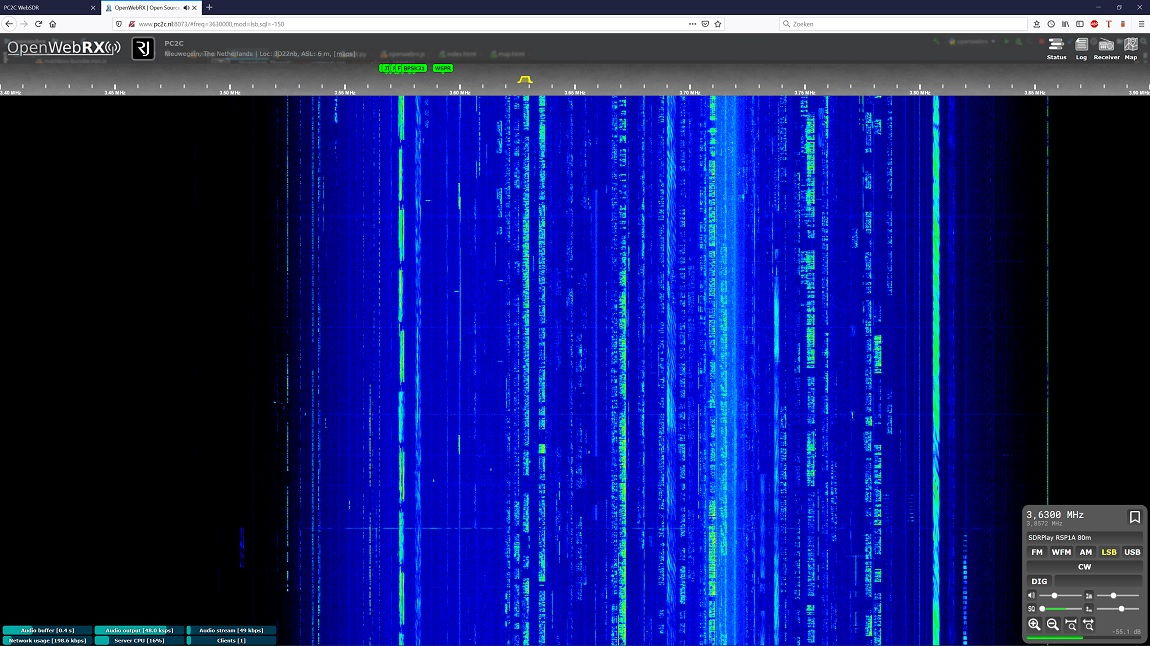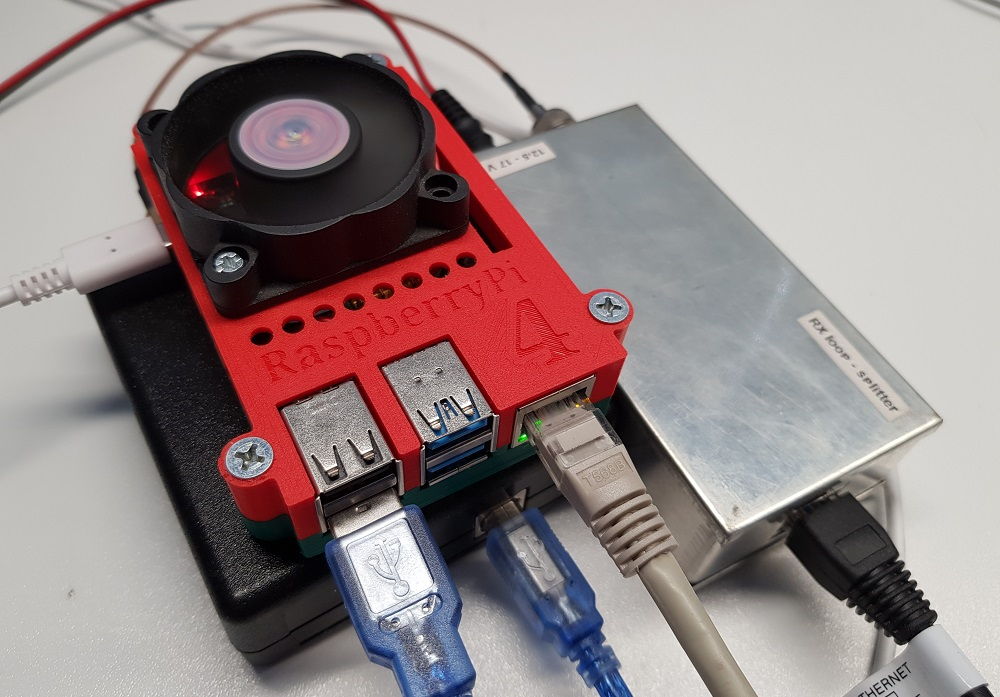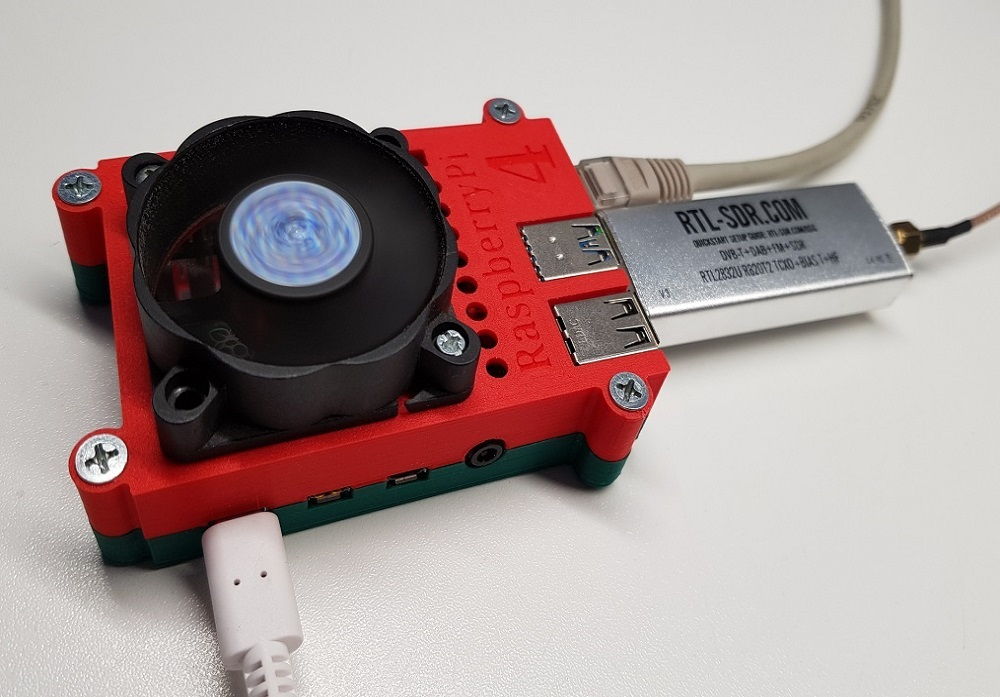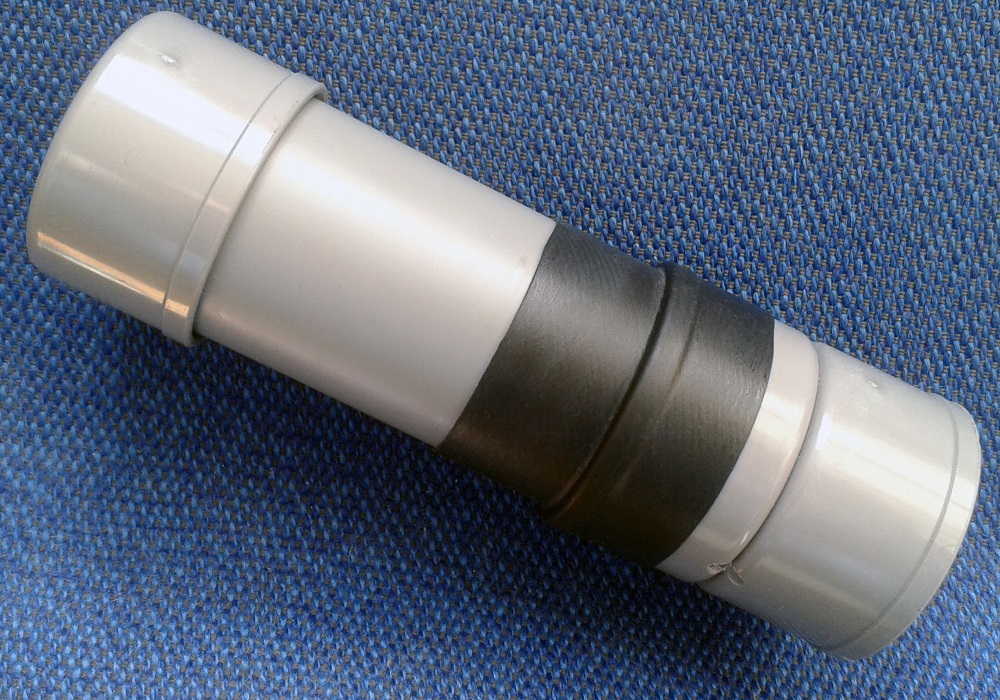OpenWebRX is an SDR receiver that runs on, for example, a Raspberry Pi. The receiver is operated using a web browser, such as Firefox or Google Chrome.
OpenWebRX offers a good opportunity to build a versatile SDR receiver with relatively inexpensive means. The receiver works with many different SDR hardware, including the popular RTL-SDR dongle.
Moreover, OpenWebRX supports a large number of reception modes. Even digital modes such as DMR, DStar, FT4, FT8 and WSPR are supported without the need for additional software.
András Retzler (HA7ILM) is the original developer of OpenWebRX. He worked on this open source project for a total of six years. Now, Jakob Ketterl (DD5JFK) has taken over the development.
Jakob has rewritten large parts of the software and also added several new functions. For example, OpenWebRX now supports various digital modes in addition to the usual modulation methods (FM, AM, LSB, USB and CW).
An overview of new functions:
* Digital voice demodulation: DMR, DStar, NXDN and YSF (Yaesu System Fusion) **
* decoding of various digital modes: FT4, FT8, WSPR, JT9 and JT65
* decoding APRS (Packet) and Pocsag (pager)
* integration of a digital map on which the positions of received stations can be displayed
* background decoding of digital modes (several at the same time), including the possibility to exchange data with pskreporter and / or the APRS-IS network.
* possibility to have OpenWebRX as an unmanned station monitor frequency bands according to an adjustable time schedule.
* the display of labels (bookmarks) in the frequency bar, with which the positions of repeaters and the preferred frequencies of digital modes, such as FT4 and FT8, can be indicated.
** Unfortunately, decoding these digital modes is no longer possible.
For me, as a Linux nitwit, a wonderful project to increase my scarce Linux skills.
To see what it's all about, I first installed the special Raspberry package for Debian to start with.
The installation went pretty straight forward and the program works flawlessly. To make it suit my wishes a tiny bit of tweaking of the config file was needed, but this was not very difficult
After some experimenting with the software I wanted to implement the websdr into the PC2C website but that turned out to be a bit more difficult than I had thought.
With the help of Jakob and a local friend (Linux master), it eventually worked out.
I again gained some experience and have now my own WebSDR page here.
The WebSDR runs, along with this entire website, on a Raspberry Pi 4 model B, with 2GB RAM. When you only run the WebSDR a Raspberry Pi 3 model B+ should also work fine.
As a receiver I currently use an SDRPlay RSP1A, this is the simplest version of the SDRPlay family. As an antenna I use an Active Mini Whip or a Home made Active RX loop.
As this is an experimental project the configuration will not always be the same and the WebSDR will not always be available, but I think I can count on your understanding.
In the meantime I also connected the well-known RTL-SDR V3 stick to the websdr. When it is used in the direct-sampling mode, it is also possible to receive below 24 MHz., but this has its limitations.
Unfortunately, this is not helpful for suppressing strong signals on HF.
All in all, a nice experiment that has certainly not finished yet and will include many modifications.
A good starting point is of course the homepage of OpenWebRX. Here you can find a lot of information about the installation, devices and software packages.
For support there is a forum available where a lot of information can be found and of course there is the opportunity to ask questions.
In my experience, Jakob is able to answer many questions quickly and effectively. Let us hope he continues to do this for a long time.
Furthermore, Jakob's Wiki page is also very valuable and definitely worth reading.




